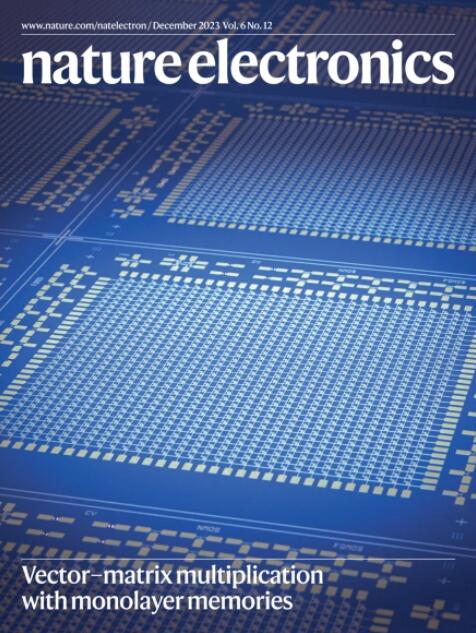一种基于耦合振荡器的组合优化Ising芯片
IF 40.9
1区 工程技术
Q1 ENGINEERING, ELECTRICAL & ELECTRONIC
引用次数: 0
摘要
从机器学习到生物信息学,许多实际问题都可以表述为组合优化问题。然而,使用传统的冯·诺伊曼计算机找到这些问题的最优解所需的计算资源随着问题规模的增加而迅速增加。基于伊辛机器的替代求解器,直接利用物理系统的平衡特性,为此类问题提供了潜在的解决方案。在这里,我们报告了一种基于耦合振荡器的全对全连接的Ising芯片,该芯片采用65纳米互补金属氧化物半导体(CMOS)技术制造,并在室温下工作。该方法依赖于基于逻辑的耦合,这导致低功耗和大量的全对全连接自旋。我们的研究表明,该芯片可以解决代表性的组合优化问题,比在软件和新兴量子退火炉中优化的经典求解器更省时、更节能。由于其能源效率和全对全连接,我们的芯片还可以高效地解决量子退火炉无法有效映射或解决的密集组合优化问题。本文章由计算机程序翻译,如有差异,请以英文原文为准。


A coupled-oscillator-based Ising chip for combinatorial optimization
Numerous practical problems—ranging from machine learning to bioinformatics—can be formulated as combinatorial optimization problems. However, the computational resources required to find an optimal solution to these problems using conventional von Neumann computers increases rapidly with problem size. Alternative solvers based on Ising machines, which directly leverage equilibrium characteristics of physical systems, offer a potential solution for such problems. Here we report a coupled-oscillator-based all-to-all-connected Ising chip that is manufactured in 65-nm complementary metal–oxide–semiconductor (CMOS) technology and operates at room temperature. The approach relies on logic-based coupling, which leads to low power consumption and a large number of all-to-all-connected spins. We show that the chip can solve representative combinatorial optimization problems in a more time- and energy-efficient manner than can optimized classical solvers in software and emerging quantum annealers. Due to its energy efficiency and all-to-all connectivity, our chip can also efficiently solve dense combinatorial optimization problems that cannot be effectively mapped or solved by quantum annealers. A coupled-oscillator-based all-to-all-connected Ising machine manufactured using 65-nm complementary metal–oxide–semiconductor (CMOS) technology and operating at room temperature can efficiently solve dense combinatorial optimization problems that cannot be effectively mapped or solved by quantum annealers.
求助全文
通过发布文献求助,成功后即可免费获取论文全文。
去求助
来源期刊

Nature Electronics
Engineering-Electrical and Electronic Engineering
CiteScore
47.50
自引率
2.30%
发文量
159
期刊介绍:
Nature Electronics is a comprehensive journal that publishes both fundamental and applied research in the field of electronics. It encompasses a wide range of topics, including the study of new phenomena and devices, the design and construction of electronic circuits, and the practical applications of electronics. In addition, the journal explores the commercial and industrial aspects of electronics research.
The primary focus of Nature Electronics is on the development of technology and its potential impact on society. The journal incorporates the contributions of scientists, engineers, and industry professionals, offering a platform for their research findings. Moreover, Nature Electronics provides insightful commentary, thorough reviews, and analysis of the key issues that shape the field, as well as the technologies that are reshaping society.
Like all journals within the prestigious Nature brand, Nature Electronics upholds the highest standards of quality. It maintains a dedicated team of professional editors and follows a fair and rigorous peer-review process. The journal also ensures impeccable copy-editing and production, enabling swift publication. Additionally, Nature Electronics prides itself on its editorial independence, ensuring unbiased and impartial reporting.
In summary, Nature Electronics is a leading journal that publishes cutting-edge research in electronics. With its multidisciplinary approach and commitment to excellence, the journal serves as a valuable resource for scientists, engineers, and industry professionals seeking to stay at the forefront of advancements in the field.
 求助内容:
求助内容: 应助结果提醒方式:
应助结果提醒方式:


